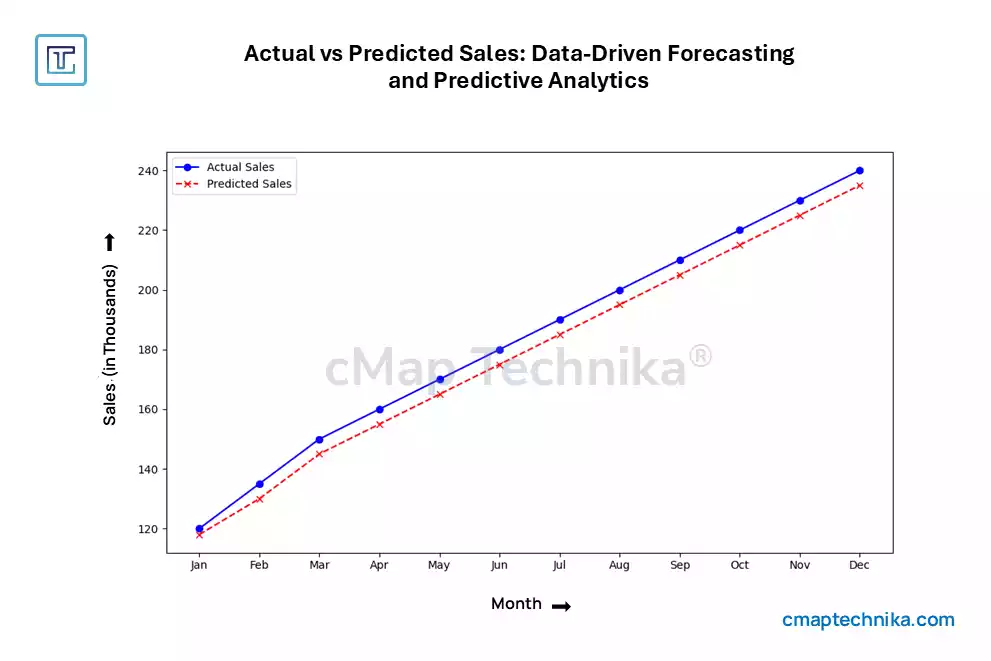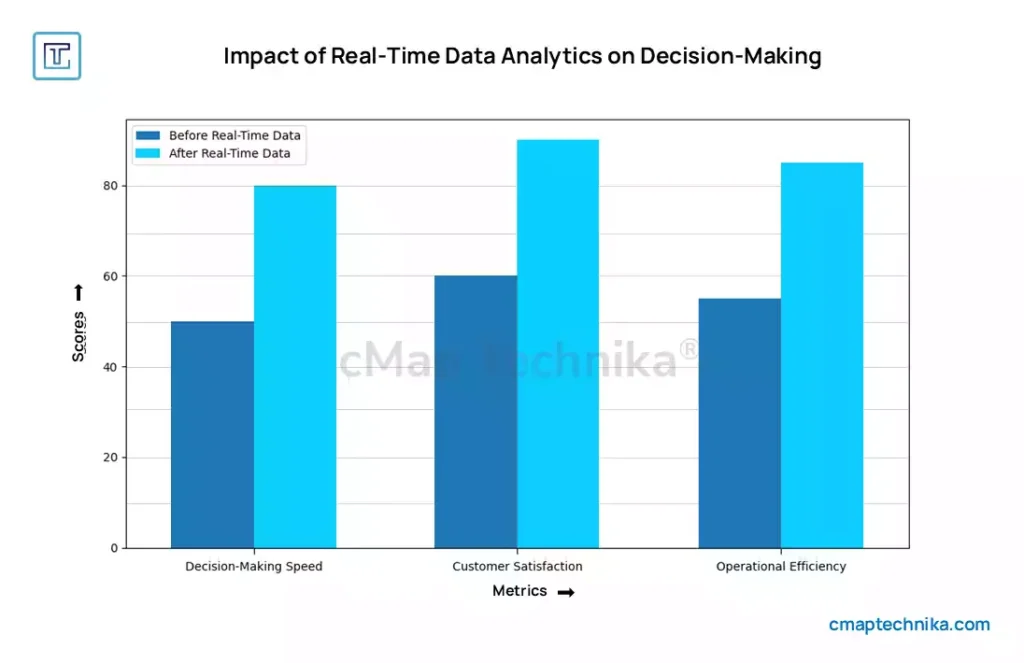In the age of digital transformation, data has become the backbone of decision-making across industries. From healthcare to finance, retail to manufacturing, organizations are increasingly relying on data analytics to drive operational strategies, enhance efficiency, and make informed decisions. In a world where the volume of data is growing exponentially, the ability to harness and leverage this data effectively has become a key competitive advantage. This article delves into how data-driven operations enhance decision-making processes and drive operational excellence, ultimately helping organizations navigate complexities and sustain long-term growth.
Understanding Data-Driven Operations
Data-driven operations refer to the use of data and analytics to guide decision-making at every level of an organization. Instead of relying on intuition, past experiences, or fragmented information, data-driven operations integrate real-time and historical data to make informed decisions that optimize business performance. This approach allows businesses to base their actions on empirical evidence, rather than assumptions or guesswork.
The shift towards data-driven operations is part of a broader movement towards data democratization, where more employees have access to data and the tools necessary to interpret it. Historically, decision-making was often limited to a small group of leaders or experts. Today, the ability to analyze and act on data is spread across the organization, creating a culture of collaboration and informed decision-making at all levels. This approach not only boosts efficiency but also empowers teams to make quicker, more accurate decisions.
For example, in the retail industry, companies like Amazon use data-driven operations to optimize inventory management, personalize marketing, and enhance customer experiences. By analyzing customer purchasing patterns and behaviors, Amazon can predict demand, offer targeted recommendations, and adjust prices in real time, thus maximizing sales and minimizing excess stock. Similarly, in the manufacturing sector, predictive analytics helps companies anticipate equipment failures, improving maintenance schedules and reducing unplanned downtime.
How Data-Driven Operations Enhance Decision-Making
The adoption of data-driven operations enables businesses to improve decision-making in several key ways. The integration of data analytics into business processes leads to more accurate, timely, and objective decisions, contributing to operational excellence.
1. Real-Time Insights for Agile Decision-Making
In a fast-paced business environment, the ability to make decisions in real time is critical. Data-driven operations provide organizations with real-time insights into key performance indicators (KPIs) and operational metrics. Whether it’s sales figures, customer behavior, or supply chain performance, access to up-to-date data allows organizations to respond quickly to emerging trends or issues.
For instance, in the e-commerce sector, companies can monitor sales data continuously to detect shifts in customer demand. This allows them to adjust marketing campaigns or reallocate inventory in real-time, ensuring they stay ahead of trends and capitalize on emerging opportunities. In the healthcare industry, real-time data helps doctors and medical staff make quicker, more accurate diagnoses, improving patient care outcomes.
2. Data-Driven Forecasting and Predictive Analytics

One of the most significant advantages of data-driven operations is the ability to forecast future trends with a higher degree of accuracy. Predictive analytics, powered by machine learning and statistical models, allows businesses to anticipate future demands, market conditions, and potential risks. This enables proactive decision-making, rather than reactive responses.
For example, companies in the logistics industry use predictive analytics to forecast demand for transportation services. By analyzing historical data, traffic patterns, and seasonal trends, they can predict when transportation resources will be in high demand, allowing them to plan capacity accordingly and avoid delays. In retail, predictive analytics helps businesses anticipate consumer preferences, optimize product offerings, and even forecast sales volume.
This level of forecasting is not only beneficial for optimizing operations but also for strategic planning. By anticipating future market conditions and consumer behavior, businesses can adapt their strategies to maintain a competitive edge.
3. Data as a Foundation for Strategic Decisions

Data-driven operations provide businesses with the evidence they need to make long-term strategic decisions. In the past, many organizations relied on gut feelings, intuition, or limited market research when making decisions about new products, entering new markets, or expanding operations. However, today’s business environment demands more precision.
By leveraging data analytics, organizations can make more informed decisions about everything from product development to market expansion. For instance, before launching a new product, companies can analyze customer feedback, market trends, and competitor strategies. This allows them to assess the potential demand, identify target demographics, and refine the product to meet customer needs. Similarly, businesses can use data to assess the viability of entering new geographical markets or forming strategic partnerships.
4. Enhanced Operational Efficiency

Data-driven operations play a crucial role in enhancing operational efficiency by identifying inefficiencies and optimizing workflows. Through data analysis, businesses can pinpoint areas where resources are being underutilized or where processes can be streamlined. This not only reduces costs but also improves productivity.
In manufacturing, data analytics can help identify bottlenecks in production lines or inefficiencies in supply chain operations. By analyzing production data, manufacturers can optimize workflows, reduce waste, and improve throughput. Similarly, in the service industry, businesses can use data to monitor customer interactions and identify areas where the customer experience can be improved, leading to greater satisfaction and loyalty.
Furthermore, automation and machine learning algorithms powered by data analytics can handle repetitive tasks, freeing up human workers to focus on more strategic responsibilities. This combination of automation and informed decision-making drives operational excellence, reducing human error and improving overall performance.
5. Data-Driven Risk Management
Every business faces risks, whether they are financial, operational, or reputational. Data-driven operations help businesses identify, assess, and mitigate these risks more effectively. By analyzing historical data, businesses can detect patterns and predict potential risks before they become major issues.
For example, in the financial industry, banks and investment firms use data analytics to assess the risk of loan defaults, predict market fluctuations, and manage portfolios. Similarly, in the supply chain, businesses can use data to identify potential disruptions, such as supplier delays or transportation issues, and take corrective action before they affect operations. With the power of data, businesses can better manage risk, minimize losses, and safeguard their long-term stability.
The Role of Technology in Data-Driven Operations
The ability to derive actionable insights from data is heavily dependent on the technology used to collect, analyze, and visualize data. In the past, many businesses relied on basic reporting tools or spreadsheets, which limited their ability to analyze large datasets. However, modern technologies such as cloud computing, big data analytics, artificial intelligence (AI), and machine learning have revolutionized data-driven operations.
Cloud computing enables businesses to store and process massive amounts of data at scale, making it easier to access and analyze information from various sources. Big data analytics allows organizations to process large and complex datasets, uncovering hidden patterns and correlations that were previously undetectable. AI and machine learning algorithms, on the other hand, enable businesses to build predictive models, automate decision-making processes, and continually improve performance through data-driven feedback loops.
These technologies empower organizations to make faster, more informed decisions that drive operational excellence. With the right technology infrastructure in place, businesses can unlock the full potential of their data and gain a competitive advantage in their respective industries.
Building a Data-Driven Culture
While technology is crucial for data-driven operations, it is the culture of an organization that determines whether data analytics will be truly effective. For data-driven operations to thrive, companies need to foster a culture where data is valued, and employees are encouraged to use data in their daily decision-making processes.
This requires leadership to not only invest in the right tools but also promote data literacy across the organization. Training employees to interpret and act on data is essential for creating a data-driven culture. Moreover, organizations must break down silos and ensure that data is shared across departments to promote collaboration and informed decision-making.
When employees at all levels of the organization have access to relevant data and are empowered to use it, the entire company becomes more agile, responsive, and capable of driving operational excellence.
Conclusion
The power of data-driven operations lies in the ability to turn raw data into valuable insights that inform decision-making and drive business performance. By leveraging data analytics, organizations can make more accurate, timely, and objective decisions, enhancing efficiency, reducing risks, and fostering a culture of continuous improvement. Data-driven operations are not just a trend; they are the future of business. Organizations that embrace data-driven decision-making are better positioned to navigate an increasingly complex business environment and achieve sustainable growth. As the volume of data continues to grow, so too does the potential for innovation, making data an indispensable asset for driving operational excellence.







